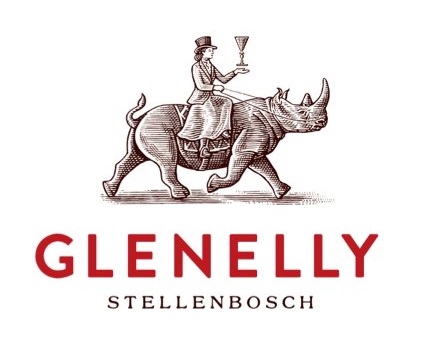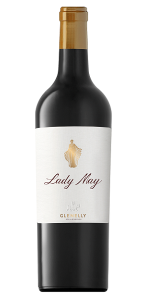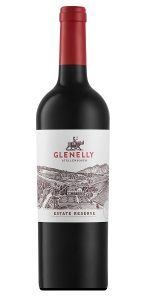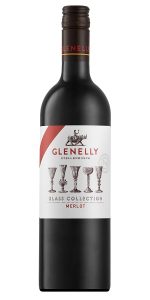
Technical Analysis
Glenelly released Glass Collection Cabernet Franc for the first time in 2014; previously, all their fruit was blended with other wines.
Tasting note
The wine has tremendous brilliance with a rich and bright inky purple colour. The nose entices with its garrigue character of dried thyme, oregano and cape fynbos with a background of warm stones. The palate is dominated by aromas of dark cherries, blueberries and graphite that gives great interest. The tannins are silky and the finish is long and smooth.
Vintage conditions
Winter was cold and wet, helping with soil moisture after the 2018 drought. Although a cool spring, there was good bud burst. Fluctuations in weather during flowering and berry set, resulted in loose, uneven bunches with small berries and veraison started earlier than usual. Cool conditions during growing season also led to uneven bunch ripening, however, much needed heat in February accelerated the harvest of the early varietals and evened out bunches. The harvest was challenging with wet conditions from the end of February to the end of March meant a long 3 weeks break during harvest. This was a positive in that it increased ripening time. The harvest was smaller than previous years but of high quality.
Vinification details
The grapes were lightly crushed into stainless steel tanks and fermentation was done with natural, indigenous yeasts and a mixture of rack and returns and open pump overs. Post fermentation skin contact was observed for a period of 2 to 3 weeks, followed by a gentle press. Malolactic fermentation took place in French oak barrels. The wine was racked on average every 4 months and matured during 12 months.

Technical Analysis
Glenelly released Glass Collection Cabernet Franc for the first time in 2014; previously, all their fruit was blended with other wines.
Tasting note
This wine has tremendous brilliance to the rich inky purple colour bright colour. The nose entices with its garrigue character of dried thyme, oregano and cape fynbos, with black cherry and warm stones in the background. The palate is dominated by aromas of dark cherries, blueberries and graphite, which gives it great interest. The tannins are silky and the finish is long and smooth.
Vintage conditions
Leaf fall occurred earlier than usual due to limited water, only 80% of expected rainfall. Winter cooled off later with higher than usual temperatures. A warm spring stimulated early cultivars to have even and fast bud burst. Shoot growth varied due to temperature fluctuations which lead to faster suckering. Above average rainfall during flowering and berry set lead to unevenness between berries and bunches. Night time temperatures were cooler during ripening, which lead to good colour and flavour. Harvest started later but sped up mid-season and slow later due to rain showers. Mid February a large hail storm occurred but created limited damage. Despite the challenges and a small harvest, great wines were made.
Vinification details
The grapes were lightly crushed and gently pressed and the juice transferred to two stainless steel fermenters where it underwent spontaneous fermentation (wild ferment). The two tanks ran at different temperatures, one at 13 degrees and the other at 18 degrees. The wine was not allowed to go through malolactic fermentation and was left on the lees until bottling took place.

Technical Analysis
Glenelly released Glass Collection Cabernet Franc for the first time in 2014; previously, all their fruit was blended with other wines.
Tasting note
Deep, rich, bright colour. The nose entices with its garrigue character of dried thyme, oregano and Cape Fynbos, with black cherry and pencil lead in the background. The palate is dominated by aromas of dark cherries, blueberries and graphite, which gives it great interest. The tannins are silky and the finish is long and smooth.
Vintage conditions
Winter was late, but cold enough to break dormancy. Very low rainfall led to extremely low soil moisture levels which meant that irrigation was key to relieving stress in the vineyard. A good spring led to good and even bud burst thanks to warm weather for the season with little to no rain. Although there were more bunches, the berries were smaller. The harvest was earlier than normal and larger than the previous year.
Vinification details
The grapes were lightly crushed into stainless steel tanks, followed by fermentation by natural yeast with a mixture of rack and returns and open pump overs. Post fermentation, there was skin contact for 2-3 weeks before it was pressed gently. Malolactic fermentation occurred in French oak barrels which were racked on average every 4 months; a total of 12 months’ ageing took place.

Technical Analysis
Glenelly released Glass Collection Cabernet Franc for the first time in 2014; previously, all their fruit was blended with other wines.
Tasting note
The Cabernet Franc comes from parcels higher on the slopes of the Simonsberg mountain, which shows in the concentration of the wine. Cherries and cranberries lead the way with dried herbs and minerality close behind. The tannins are refined and balance well with grass and graphite notes.
Vintage conditions
Winter was late, but cold enough to break dormancy. The low rainfall led to low soil moisture levels which in turn created stress later in the season. An ideal spring led to good even bud burst, with warm weather from end-October to end-January. This resulted in restricted growth, smaller berries and lower bunch mass. Harvest was a week earlier than normal and smaller than in previous years.
Vinification details
The grapes were lightly crushed into stainless steel tanks, followed by fermentation by natural yeast with a mixture of rack and returns and open pump overs. Post fermentation, there was skin contact for 2-3 weeks before it was pressed gently. Malolactic fermentation occurred in French oak barrels which were racked on average every 4 months; a total of 12 months’ ageing took place.

Technical Analysis
Glenelly released Glass Collection Cabernet Franc for the first time in 2014; previously, all their fruit was blended with other wines.
Tasting note
Displays a deep rich colour with a purple tinge on the edge. The nose entices with its garrigue character of dried thyme, oregano and Cape Fynbos. The palate is dominated by aromas of dark cherries, blueberries and graphite, with silky tannins and a long, smooth finish.
Vintage conditions
2015 was a great year although ‘fast’, characterised by low pH levels and good acidity. Thanks to sufficient cold units, full dormancy was achieved with bud break occurring two weeks early. Warmer days and cooler nights in December caused harvest to be two weeks earlier than normal.
Vinification details
The grapes were lightly crushed into stainless steel tanks, followed by fermentation by natural yeast with a mixture of rack and returns and open pump overs. Post fermentation, there was skin contact for 2-3 weeks before it was pressed gently. Malolactic fermentation occurred in French oak barrels which were racked on average every 4 months; a total of 12 months’ ageing took place.
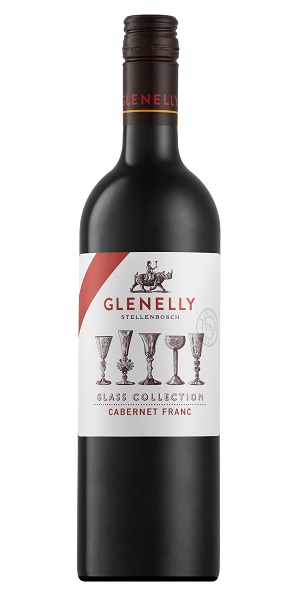
Technical Analysis
Glenelly released Glass Collection Cabernet Franc for the first time in 2014; previously, all their fruit was blended with other wines.
Tasting note
Displays a deep rich colour with a purple tinge on the edge. The nose entices with a garrigue character of dried thyme, oregano and Cape Fynbos. The palate is dominated by aromas of dark cherries, blueberries and graphite, with silky tannins and a long, smooth finish.
Vintage conditions
Rain in November and January meant that less irrigation was required, but disease pressure was higher and stricter controls needed. The high soil moisture content resulted in vigorous growth and canopy management was crucial. Fortunately ideal dry and moderate conditions reigned during ripening in late January and February and there was good flowering and berry set. Harvest was one week later than normal due to a late cold winter and cool spring. Wine quality is exceptional.
Vinification details
The grapes were lightly crushed into stainless steel tanks, followed by fermentation by natural yeast with a mixture of rack and returns and open pump overs. Post fermentation, there was skin contact for 2-3 weeks before it was pressed gently. Malolactic fermentation occurred in French oak barrels which were racked on average every 4 months; a total of 12 months’ ageing took place.

